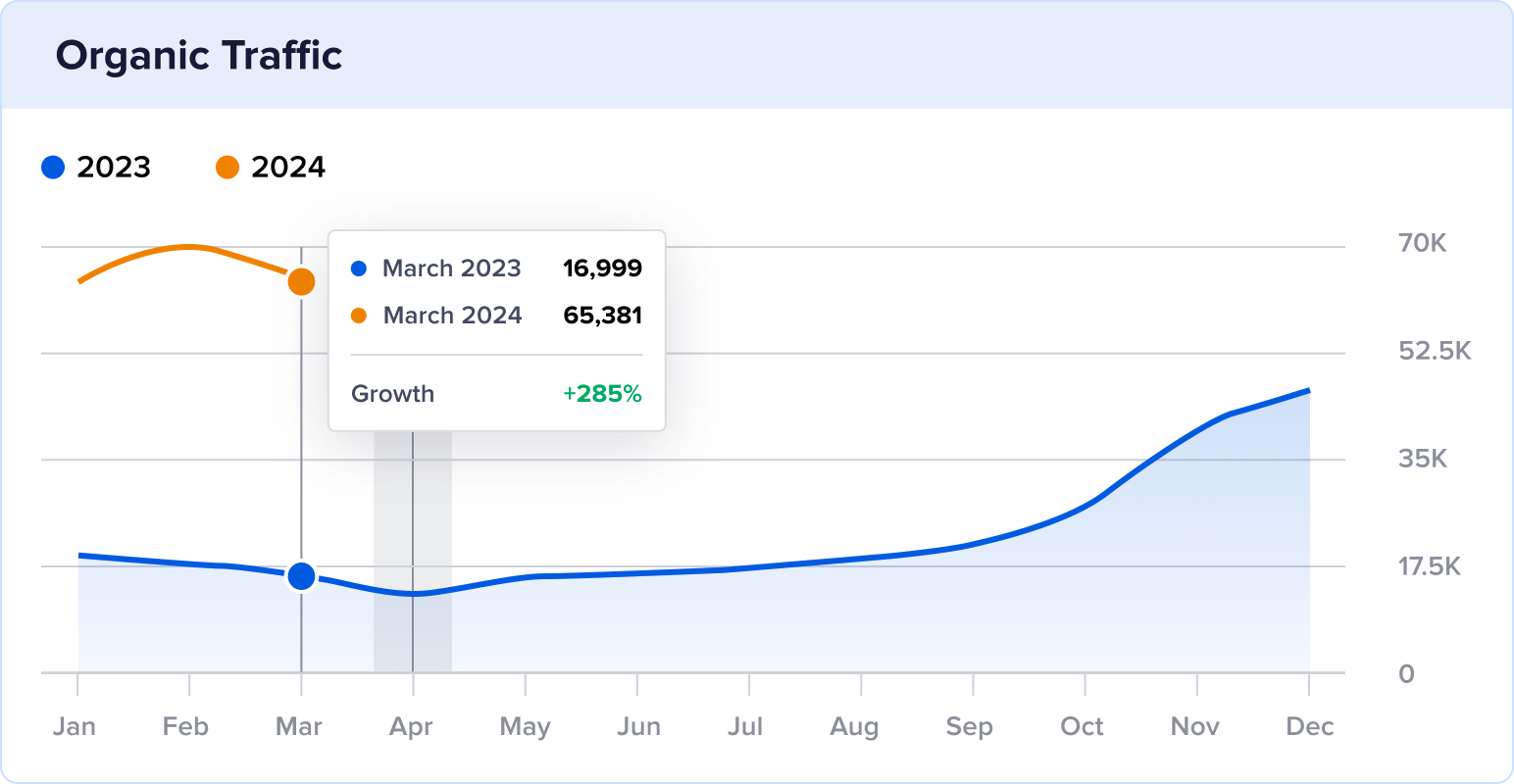How a Digital News Hub Skyrocketed Traffic by 1,318% YoY
https://stackdiary.com/
Stats
8.5K to 120.3K Monthly Visits
Industry
Web & Tech
Niche
Tech & Dev News
Reporting Date
August 2023
In the ever-evolving landscape of technology, web development, and design, staying ahead is a daily endeavor.
And for websites reporting on the latest trends, it takes more than just relaying the information to stand out.
In this case study, we’ll explore how one publishing platform used a mix of new and tried-and-true techniques to claim its space on the search engine results page (SERP).
Join us as we reveal the strategies behind stackdiary.com and its 1,318% growth year-over-year (YoY).
We’ll share their secrets so you can apply their winning strategies to your site.
Let’s get started.
In This Article
About Stack Diary
Stack Diary is a digital news hub for web development, design, and technology.
It also covers categories such as artificial intelligence, security, and web hosting.
Tutorials, however, bring in most of the site’s traffic. These step-by-step guides address various software development scenarios, issues, and fixes.
Stack Diary aims to share industry insights and practical guides that make the latest web developments accessible to all.
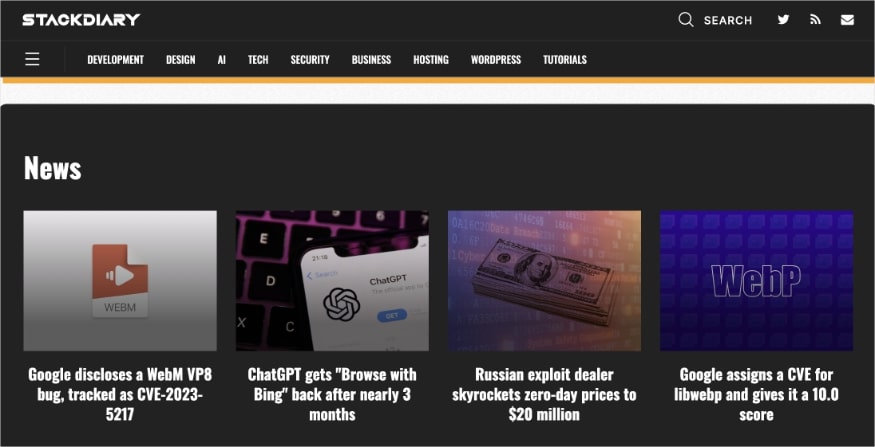
Historical Performance
Stack Diary was launched in 2021 by Alex Ivanovs, a full-stack developer, digital growth specialist, and writer.
He started Stack Diary as a blog to document lessons learned over his 10+ years in web management.
During its first full year (2022), the website received 135,743 organic visits.
As we analyze this website in August 2023, organic traffic has more than tripled.
And that’s only 8 months into the year.
From January to August, Stack Diary has already accumulated 566,796 visits.
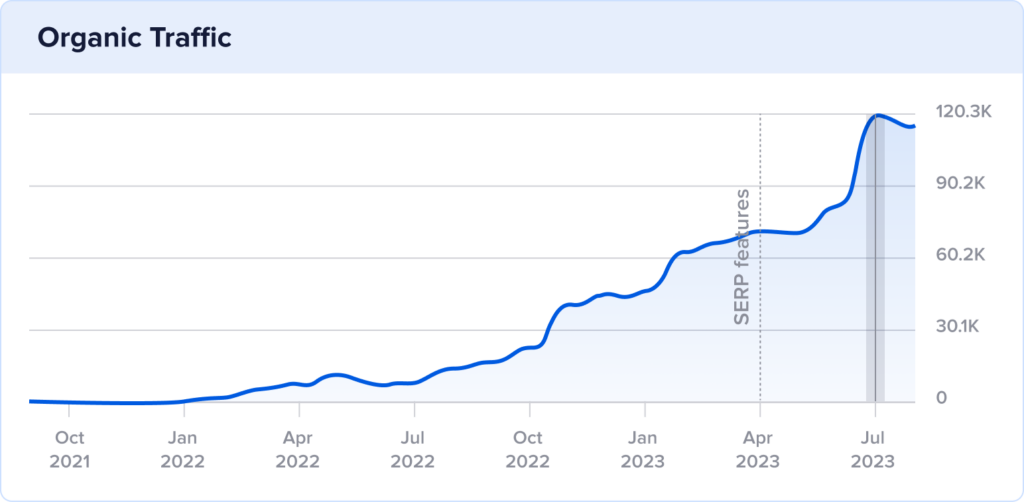
This growth begs the question, what is stackdiary.com doing differently in 2023 that’s causing this massive surge in traffic?
We’re going to reveal the answers next.
The Catalyst: How Stack Diary Achieved 1,318% Growth YoY
Stackdiary.com grew organic traffic by performing the following:
- Leveraging programmatic SEO
- Implementing schema markup
- Acquiring more backlinks
Let’s look at each of these items in detail to understand their significance and how they catapulted Stack Diary’s success.
1. Leveraging Programmatic SEO
Thus far into 2023, Stack Diary has added around 1,500 new pages to its site.
April to May shows the most significant jump, increasing by 867 pages.

Over half of these pages were for a new category: Linux Docs.
239 were glossary entries, and 85 were reference materials. Neither of these categories is present on the site today.
But why did Stack Diary opt for such a structured approach to content creation, only to remove over 300 pages from the site later?
This decision appears to be a case of trial-and-error strategies in programmatic SEO.
Programmatic SEO is a data-driven approach to automate the content creation process.
It uses a template (that you build) and then leverages data and automation to create new content.
As a result, many pages share a similar format, with topic variations.
Stack Diary’s three new categories fulfill this template-like appearance. The topics are also ideally suited to automated content generation.
Glossaries, for instance, demand a straightforward, unbiased response.
Similarly, reference materials display technical content that requires minimal human input.
These patterns suggest Stack Diary experimented with programmatic SEO, keeping only what proved effective.
And in the case of these new categories, Linux Docs was the lone survivor.
Why this matters:
In the world of SEO, experimentation is integral to success.
Ivanovs has been transparent about Stack Diary’s history and evolution since the beginning. Considering he’s a digital growth specialist, he may view this website as a testing ground and programmatic SEO as his latest venture.
As for your website, it’s critical to assess if programmatic SEO aligns with your objectives.
The primary advantage of programmatic SEO lies in its scalability, allowing you to manage large volumes of content.
However, AI-generated content is not a one-size-fits-all solution.
Consider how this programmatic content can enhance your business strategy before incorporating it into your website.
How to do programmatic SEO on your site:
This Zapier article explains how to do programmatic SEO on your website.
It’s also important to note that programmatic SEO isn’t limited to content creation.
You can automate SEO processes without having to forego hand-written content altogether.
Some good ways of doing this are:
- Using AI to write meta titles and meta descriptions
- Setting image alt text and title tags to generate automatically with image smart tags
- Automatically redirecting 404 pages to your homepage (or any custom page)
- Leveraging an SEO plugin to get internal linking suggestions directly in WordPress
Tools for programmatic SEO:
All in One SEO (AIOSEO) can help you automate SEO processes to make your optimizations more efficient.
Regarding the above bullet point list, AIOSEO has a tool for each task:
- For writing metadata: AI Title/Description Generator crafts unique and compelling meta titles and descriptions in just 1 click.
- For image SEO: Turn on Image SEO to add variables and customize image attributes automatically.
- For 404 redirects: Redirection Manager makes it easy to help users and search engines navigate your site and avoid dead ends. You can also redirect your entire site to a new domain in just a few clicks.
- For linking: Link Assistant generates internal linking suggestions directly in the WordPress editor. Find linking opportunities without scouring your site and add them easily to your content.
2. Implementing Schema Markup
Even though the Glossary and References categories are no longer on the site, Stack Diary continued publishing new content.
They also used schema markup to ensure these pages received attention on the SERP.
Schema markup, or structured data, is a specialized code within a web page. It shares details about your content with search engines and communicates how you want it displayed in search results.
Schema markup aims to win rich results, which display additional information directly on the SERP.
In Stack Diary’s case, they won both rich snippets and featured snippets.
Here is an example of the former (rich result):

And the latter (featured snippet):

While analyzing stackdiary.com, we located several instances of various schema types, such as:
- Author
- Breadcrumb
- Image
- Organization
- News
Their top-ranking keywords confirm the effectiveness of schema markup, with 5 out 6 results showing a rich result of featured snippet.
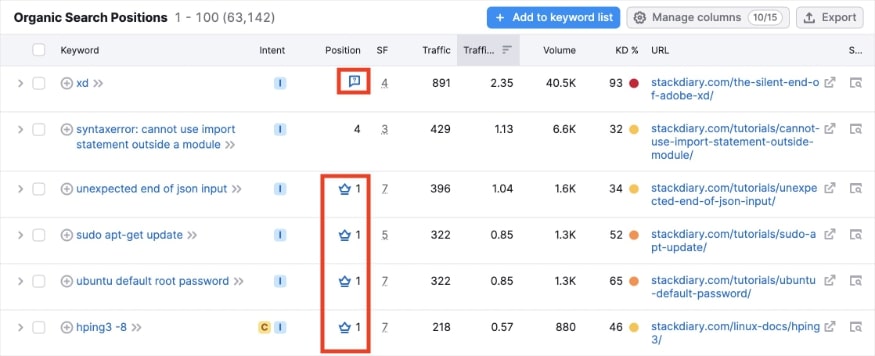
Why this matters:
By implementing structured data on its site, Stack Diary has secured more rich results and featured snippets on the SERP. These enhanced search results boost online visibility and drive more traffic to the site.
Furthermore, rich results boast higher clickthrough rates (CTRs) than non-rich results.
How to implement schema markup on your site:
There are several ways to include schema markup on your site manually.
This schema markup guide shows three methods for adding it to WordPress without a plugin.
Each method involves a few steps and requires you to obtain and copy code into the appropriate fields.
Tools for implementing schema markup:
A WordPress SEO plugin can implement structured data for you (no coding required). With AIOSEO’s Schema Generator, it’s as simple as choosing the schema type you want, and then we’ll format it for Google.
Here are the schema types available in AIOSEO:

Now that we understand Stack Diary’s use of schema markup and programmatic SEO, let’s look at the final contributing factor to its growth: backlinks.
3. Acquiring More Backlinks
Stack Diary was sitting comfortably at 60K backlinks for the past year.
Then, in August, its backlinking profile skyrocketed to 169K.
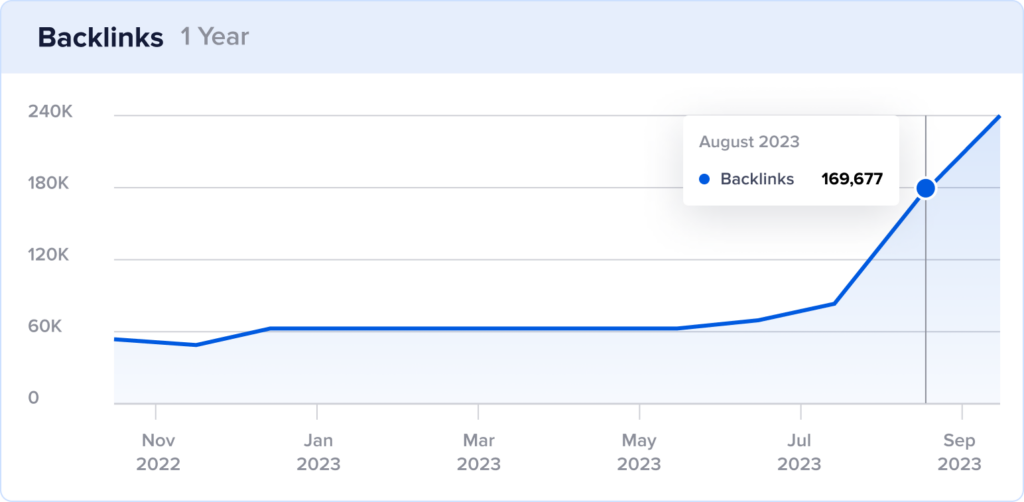
Stack Diary acquired an additional 100K backlinks in a single month.
This chart of new versus lost backlinks makes the growth even more evident:
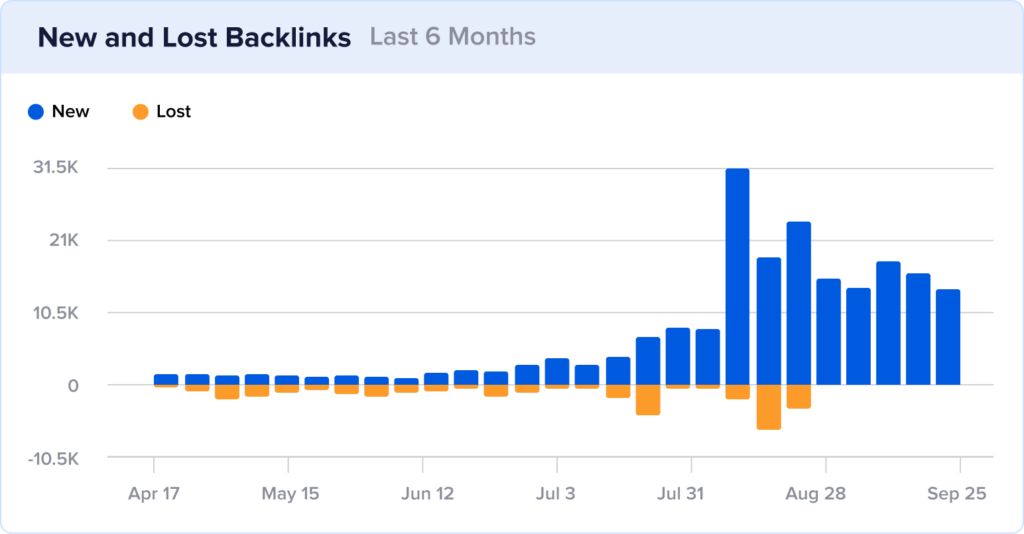
While we can’t speak to the exact steps taken to obtain these backlinks, the drastic change merits highlighting as a growth factor.
Why this matters:
Backlinks are a Google ranking factor and act like votes of confidence for your website. They signal to search engines that your site offers valuable and trustworthy content. Additionally, they help establish authority within your niche.
How to do link building for your site:
A comprehensive SEO strategy goes beyond backlinks. Every successful linking strategy should optimize for the following types of links:
- Internal links (from one page on your site to another page on your site)
- Outbound links (from your site to another external site)
- Backlinks (from an external site to your site)
This link-building guide details the how-to steps for each.
Ultimately, relevancy is key, and quality trumps quantity when link building.
Tools for link building:
AIOSEO’s Link Assistant helps you find internal linking opportunities quickly. With linking suggestions that populate directly in the WordPress editor, it’s as easy as clicking Add Link.
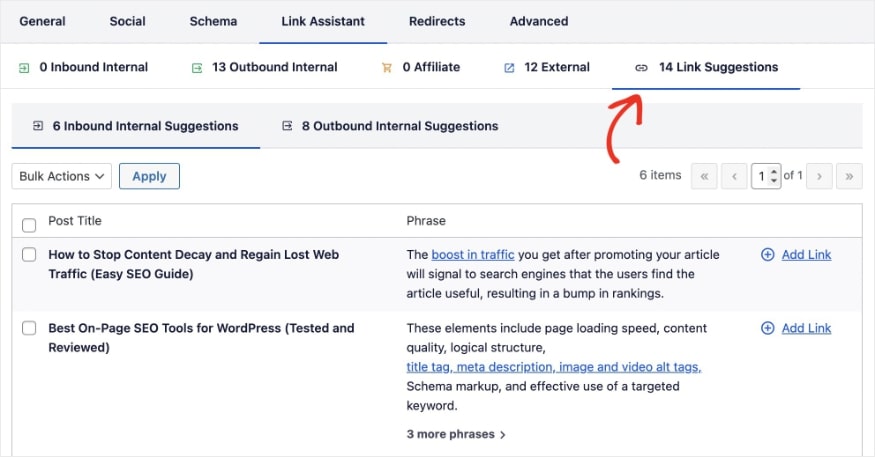
Standout SEO Wins
Before we conclude, we want to point out a noteworthy writing technique Stack Diary applies to its content:
1. They optimize for content readability.
Content readability measures how easily users can read and understand your content. It plays a pivotal role in user engagement and comprehension.
And while it isn’t a Google ranking factor, it does influence essential SEO metrics like time on page, bounce rate, and conversion rate.
Stack Diary adjusts the level of tech-speak to its audience, favoring clear language over jargon limited to advanced users. It prefers brevity to dissect complex subjects and employs white space to break up any blocks of text.
This strategy enhances user engagement and improves SEO performance by keeping visitors on the site longer.
Tool: All in One SEO’s TruSEO Analysis simplifies content readability with an easy-to-understand checklist. You’ll know which elements meet readability standards and which ones need tweaking. It also gives you actionable insights to improve readability.
Below is an example of Readability suggestions from TruSEO.
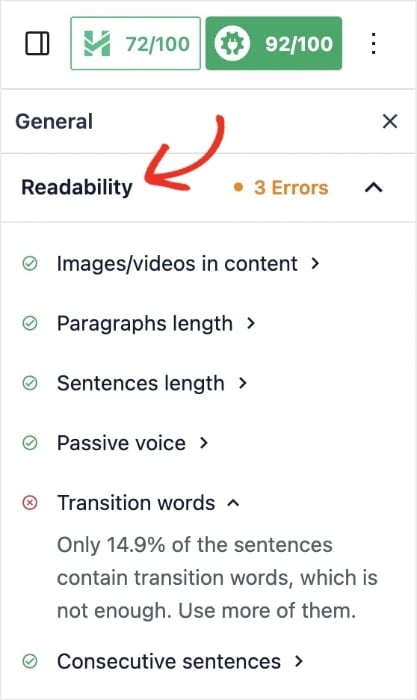
Takeaways
In our analysis of stackdiary.com, we’ve uncovered the main factors contributing to its explosive growth in organic traffic.
Now, let’s review which standout strategies to apply to your website and which ones to reconsider.
Top 3 Strategies to Emulate
- Leverage programmatic SEO to automate manual processes. Stack Diary’s experimentation with programmatic SEO allowed it to grow its content offering in a short amount of time. This process also helped identify the most effective categories for its audience.
(For your site, you don’t have to hand over the entire content creation process to AI. You can automate specific SEO tasks to streamline your workflow while producing high-quality, handwritten content.) - Implement schema markup to win more rich results on the SERP. While schema markup doesn’t guarantee a rich result, it increases your chances. Using structured data can win attention-grabbing real estate on the SERP and drive more traffic to your site.
- Build more backlinks to your site. Stack Diary’s backlinking efforts proved fruitful in 2023, helping to establish its authority within the tech and web domain. This link-building guide shares how to get more backlinks and build a robust internal linking strategy.
Bottom 3 Strategies to Reconsider
- Overlooking FAQ schema. Stack Diary appears for many FAQ rich results on the SERP, but it is not currently using FAQ schema. By implementing it, they could improve the website’s visibility even further. It’s also easy to include on your site when you have a plugin with rich snippet schema.
- Relying on a single author. When browsing Stack Diary, the only author visible was the founder. That’s not abnormal for new sites, but it can become a limiting factor as the website grows. This limited bandwidth could explain why Ivanovs turned to programmatic SEO to scale Stack Diary’s content efforts.
Diversifying authorship or exploring collaborations with other industry experts can ease this constraint. You could then include Author schema to help users and search engines understand who wrote the content. This practice can help establish authority, a crucial component of Google E-E-A-T. - Neglecting image title tags. Stack Diary does a good job crafting alt text but doesn’t use image title tags. Both features play important roles in accessibility and SEO. AIOSEO can help you automate image titles to avoid manual optimizations and increase the chances of your images ranking in search results.
Steal Our SEO Winning Strategy: A Checklist for Your Website
Want to replicate Stack Diary’s organic growth on your site?
Our SEO checklist has the 50 must-have items to set your site up for success.
Download A Free SEO Checklist
Access our comprehensive SEO Checklist with a single click. We’ll deliver it straight to you, putting actionable items with SEO tools and tutorials right at your fingertips.
Enter your name and email to download a free SEO checklist.
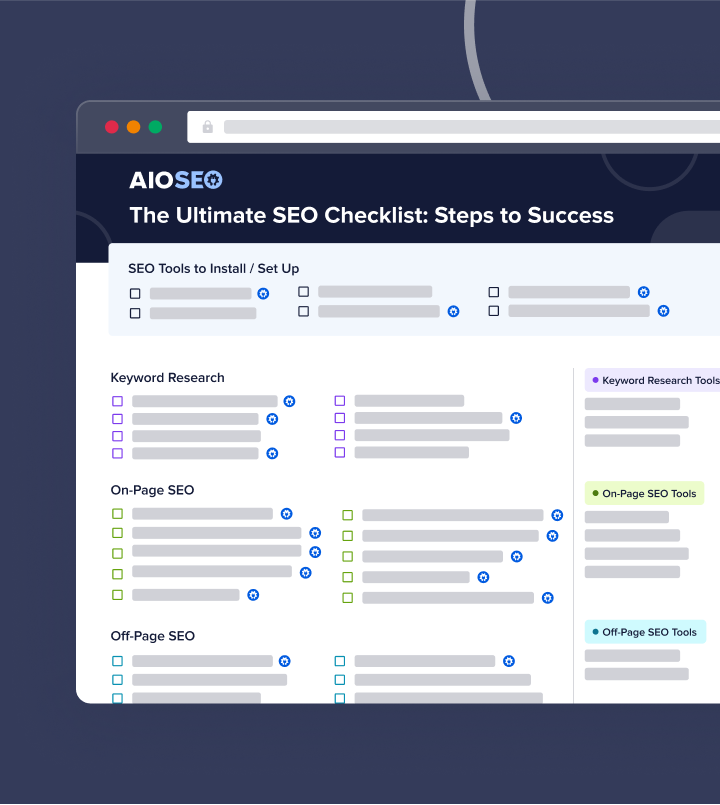
Unlock Your Site’s Potential & Boost Visibility With AIOSEO
Not every website owner is a digital growth specialist like Stack Diary’s founder.
And that’s okay!
You can still win and dominate the SERP—with the right tools.
All in One SEO (AIOSEO) makes optimizing your site easy so you can focus your expertise where it has the greatest impact.

Over 3 million marketers, bloggers, and business owners trust AIOSEO for their website optimizations. We offer a comprehensive suite of tools to empower you to maximize your online presence and digital footprint. Our features and settings are easy to implement, removing the mystery and guesswork from SEO.
Here are some of our most popular features:
- AI Title & Description Generator: Our newest feature revolutionizes how you write meta titles and descriptions. This game-changing tool uses AI to automatically craft unique and compelling metadata for any page on your site.
- Image SEO: Set automatic image title tags and alt text with 1 click. You’ll save time on manual entries while helping users and search engines understand the content of your images.
- Redirection Manager: Create a seamless user navigation experience that prevents humans and bots from getting lost when you move content or domains. Our Redirection Manager helps you easily choose and implement the best redirect type.
- Link Assistant: Get link suggestions, edit anchor text, and add internal links to your content in a single click. Link Assistant makes your internal linking strategy more effective than ever.
- Rich Snippets Schema: AIOSEO offers several schema types to help you win more rich results on the SERP. It’s as simple as choosing the schema you want; then, we’ll format the structured data for Google.
- TruSEO On-Page Analysis: Get comprehensive feedback that’s easy to understand about your content optimizations. We’ll let you know which elements meet SEO and readability standards and give you actionable insights for those who need a little boost.





